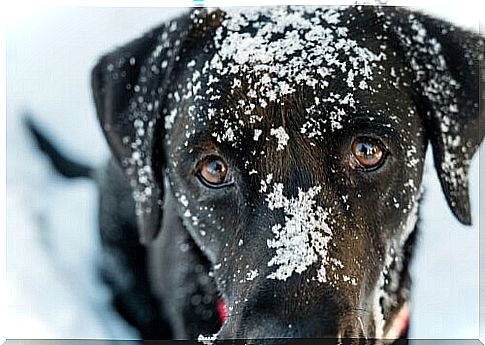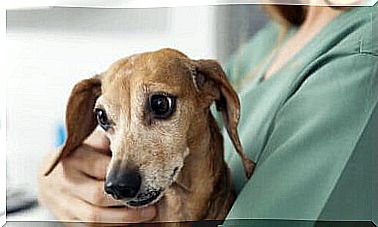Hypothermia In Dogs

Hypothermia in dogs is something we should be concerned about, especially in the winter months. When we talk about this process, we are referring to the fact that our pet’s body reaches a very low temperature, to the point of jeopardizing its survival.
When does hypothermia occur in dogs?
Hypothermia in dogs starts at 32ºC, since the normal temperature of a dog should be a little higher than that of a human: around 38ºC. However, when the temperature drops below 35ºC, this should alert us.
This condition can occur due to particularly low temperatures outdoors. In the case of puppies, these are especially vulnerable, especially after birth, so it can happen even if it’s not too cold.
Hypothermia in dogs after operations
Hypothermia in dogs can also occur after surgical procedures. The fact of opening the abdominal cavity for many operations exposes the interior of our pet to minus 10 degrees of temperature, so that, in long operations, the low temperature exposes the viscera to the environment without the protection of fat , skin and coat.
Usually, in veterinary hospitals, this is solved with electric blankets and heating in the inpatient areas, as this is a good method against hypothermia in dogs.

What are the symptoms of hypothermia in dogs?
Typically, hypothermia in dogs starts to cause signs of weakness and tremors and obviously the decrease in body temperature should be checked by inserting a human thermometer into our pet’s anus to monitor the numbers discussed above.
One place where hypothermia is most noticeable is in the ears: if you notice these symptoms but don’t have a thermometer, icy ears and cold shivering could indicate that your dog is beginning to suffer from hypothermia. Cold can also produce symptoms similar to dehydration at the skin level, so your pet may have firm, dry skin.
How is hypothermia in dogs treated?
Our pet’s temperature must be increased. In mild hypothermia, it will suffice to take our pet to a warm place and cover him with a blanket while we check to see if his temperature rises. However, in more severe cases, it will be necessary to use heaters and a visit to our veterinarian. It’s just that, if it gets worse, our pet could die of hypothermia.

Hypothermia will be especially serious when it causes mobility problems: hypothermia in dogs can damage the foot pads and produce muscle weakness and paralysis. If you notice that your dog suffers from mobility problems after spending the day in a cold place, you should take him to the vet immediately.
If you’re going to a very cold place, it’s important to protect your pet from the cold by putting coats designed for it : remember, there’s a clear difference between dressing them in clothes to please us and with the intention of protecting them. them from the cold and rain.
And, as we always recommend, it is vital for us to take care of our pet that illnesses are treated by qualified professionals and that they are not ignored.









